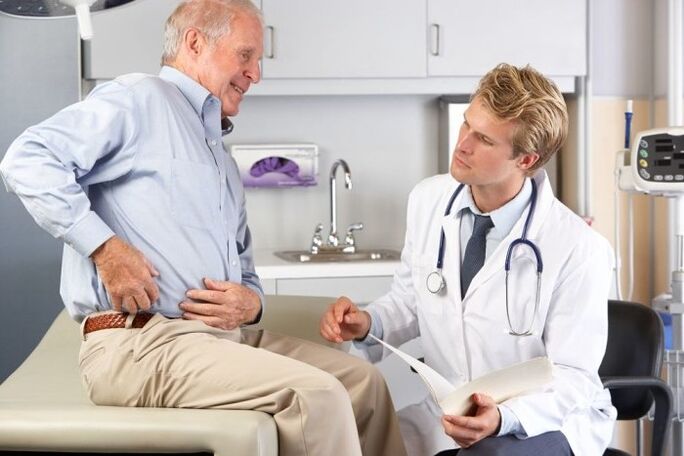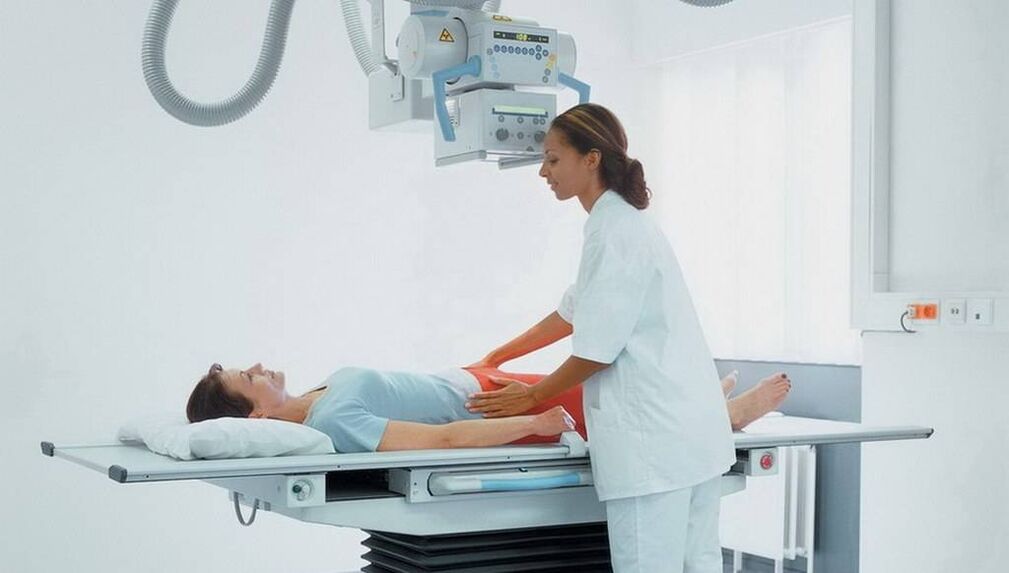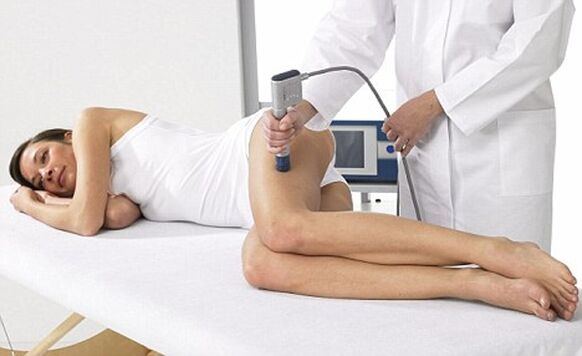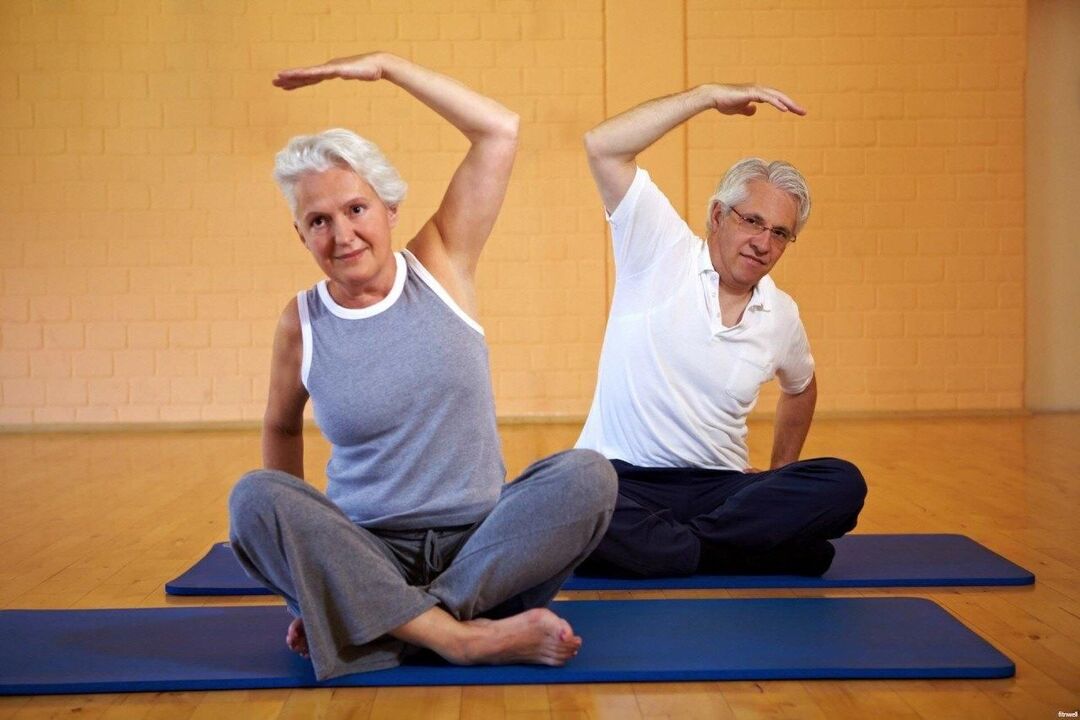Arthrosis (osteoarthritis) of the hip joint is a chronic and progressive pathology in which degenerative-dystrophic processes occur in the region of the joints of the bones of the pelvis. To be more precise, it is a destruction of the hyaline cartilage lining the femoral head and the acetabulum, the surfaces of the bones of the pelvis which are in contact with each other.
The second name of the pathology is coxarthrosis of the hip joints.
Arthrosis of the hip joints: features of the disease
Most often, first-hand knowledge of what coxarthrosis is for older people, mainly women, who are at risk of developing pathology after 45 years. Such a selective occurrence of pathology arises from the specifics of the structure of the bones of the female pelvis, as well as their direct participation in the childbirth process. In men, osteoarthritis of the hip joints (coxarthrosis) occurs mainly after 65 years.
An important role in the pathogenesis of coxarthrosis is played by the natural aging of the body, when the most stressed joints of the bones begin to collapse.

Also, the disease can be triggered by a number of infectious, traumatic and non-inflammatory diseases, their combination. Initially, arthrosis is manifested by pain and decreased movement activity in the pelvic region, but then its consequences become more serious - the affected limb is shortened.
Classification of diseases
The types of arthrosis of the hip joint depend on the features of its development and the cause of its occurrence. Often there is post-traumatic arthrosis of the hip joint - it appears after an injury. The classification also includes the following types of arthrosis:
- Dysplasia - due to dysplasia that occurred in childhood, but was not cured;
- Static - associated with an uneven load on the pelvic region, which occurs with pathologies of the foot, knee, ankle;
- Post-infectious - appears after various inflammatory diseases;
- Primary chronic - develops in older people due to aging of the body.
Any type of disease can be called "deforming arthrosis of the hip joint", since the pathology leads to a violation of the shape and appearance of the pelvic joint of the bones.
Further, the disease is divided into 3 degrees depending on the severity of the changes, the symptoms of which are described below in the text.
Reasons for the development of arthrosis
Signs of coxarthrosis can appear even in the absence of obvious prerequisites, which is due to natural degenerative processes in the joint. It has a narrow space, while supporting huge and constant loads, so it wears out sooner than others. Initially, blood circulation is disturbed in the tissues, so that nutrients are delivered to a lesser extent to the hyaline cartilage. Metabolic processes are disturbed, the cartilage dries out, cracks form on it. In addition, the articular surfaces are quickly worn out, destroyed - arthrosis of the hip joint progresses. Symptoms can appear even faster if the body is affected by a number of provoking factors:
- Any injury;
- Physical labor, heavy sports;
- Diseases of the spine, including curvature;
- flat foot;
- Arthritis against the background of an infectious process;
- Articular dysplasia transferred in childhood;
- metabolic diseases;
- Overweight;
- Rheumatism and other autoimmune pathologies.
Against the background of the influence of such factors, the disease can develop much faster - after 30-40 years.
Coxarthrosis symptoms
Signs of arthrosis of the hip joint largely depend on its degree. In the course of pathology, three degrees (stages) are distinguished:
- First degree. There are pains during physical overload - after a long walk, running, on the occasion of which there are dull aching sensations in the pelvic region (passes after a short rest). The pain does not radiate to other parts of the leg. Deforming arthrosis of the hip joint of the 1st degree does not cause changes in gait, the muscles work fully. At the end of the stage, slight restrictions on the movement of the legs may appear;
- Second degree.Pain in arthrosis of the hip joint in this case becomes more pronounced. Pain appears with minimal effort, discomfort is present in the evening after a day's work. There are pains at night, at rest. A cracking, rubbing sensation in the joint. If a person walks for a long time, rocking movements can be noticed in the gait. It becomes difficult to put on shoes, to put the foot on the side;
- Third degree.The work of the pelvic bones is severely impaired (with primary arthrosis, both joints are affected, with other types, usually only one). The groin pain is constant, excruciating, it gives to the knee. The thigh muscles are atrophied. The leg becomes shorter, so a person uses crutches and a cane to get around.
Later, ankylosis occurs, in which movement becomes impossible at all.
Diagnosis of the disease
What is coxarthrosis of the hip joint, what is its degree and how to treat the disease? All issues should be resolved after diagnosis. Despite the fact that the main diagnostic method is x-rays, the patient needs consultations from a number of narrow specialists and tests. This will help to find the cause of the disease and act accordingly. So, coxarthrosis can be triggered by osteochondrosis, flat feet, urological and gynecological infections, and their treatment will help stop the destruction of the bone joint.

As for establishing an accurate diagnosis and defining the degree of arthrosis, all changes are perfectly visualized on an image - x-ray or CT scan (MRI):
- The first degree is a slight narrowing of the gap, the appearance of marginal osteophytes;
- Second degree - narrowing of the joint space by 50% of the norm, the appearance of osteophytes on the outer and inner sides of the gap, deformation of the femoral head, often - the presence of inflammatory changes in the tissues near thejoint of the bones;
- The third degree is an acute deformity of the joint, the presence of large osteophytes, areas of sclerosis.
Osteoarthritis treatment
Conservative treatment
Ointments, creams, tablets for arthrosis of the hip joint help only in the first stage of the disease. Medications can completely restore cartilage, and it is important to start treatment early. Usually used NSAIDs, corticosteroids, chondroprotectors, hyaluronic acid drugs, muscle relaxants. They also practice massage, exercise therapy and therapeutic exercises.
At the second stage, it is necessary to connect physiotherapy and mechanical methods to influence the joint. These include the extractor hood, UHF, magnetic therapy, shock wave therapy, ultrasound, laser, inductothermy, electrophoresis. Folk remedies for arthrosis of the hip joint, like local drugs, are of only secondary importance, and the main method of treatment should be drugs.
Be sure to apply a diet for coxarthrosis of the hip joint, it is necessary to normalize metabolism and improve cartilage nutrition.

Stents for osteoarthritis
The third stage of the disease can only be treated surgically. The patient is recommended joint replacement surgery or arthroplasty. The surgeon cuts the head from the femoral bone, inserts a metal pin into the cut, on which the artificial head is fixed. After the operation, a long rehabilitation and exercise therapy is carried out, but then the hip joint will fully function, and the doctor can answer the patient in the affirmative whether it is possible tosquatting with osteoarthritis of the hip. cut.

Disease prevention
To prevent osteoarthritis of the hip joint, sport and a healthy lifestyle should be emphasized. It is impossible to overload the joints, but it is necessary to eliminate hypodynamia. Good for walking, swimming, skiing, elliptical trainer. It is also important to lose weight and eat well.

The prevention of osteoarthritis of the hip joint is also based on the early treatment of possible bruises, injuries that affect the pelvis and the spine. In childhood, all congenital joint pathologies should also be eliminated.
Answers to popular questions
- Who to contact in case of osteoarthritis? The question of which doctor treats coxarthrosis of the hip joint does not have a definitive answer. Of course, it is recommended to first contact a surgeon, traumatologist or orthopedist, depending on the capabilities of the clinic. In specialized centers, an arthrologist treats problems with the pelvic joints, but it is not always possible to find such a narrow specialist.
Depending on the cause of the disease, in the future, in parallel, you will need to apply and undergo treatment under the supervision of a rheumatologist, neurologist, infectious disease specialist and several other doctors;
- Can arthritis be cured? This disease is chronic and it is impossible to completely eliminate it, especially since the main cause is aging. But if you consult a doctor with arthrosis of the 1st degree of the hip joint, you can cure all existing changes, and then prevent a rapid progression. At later stages, it is possible to stop and correct all existing pathological changes and live normally with regular treatments. Only arthroplasty can save the joint from arthrosis, but it also has a number of disadvantages - from the need for periodic replacement of the prosthesis to postoperative complications - pain, thrombosis, infection;
- When are local therapies sufficient and in which cases can a visit to the doctor be avoided? Any ointment can only slightly improve blood microcirculation in the joint area, and also relieve pain, but does not have a therapeutic effect. In addition, this seal is located very deep, which makes it difficult for active substances to penetrate. Therefore, it is necessary to consult a doctor at any stage of the disease, regardless of the severity of the manifestations. Only at an early stage can the disease be stopped with "little blood" without surgery.
Osteoarthritis of the hip joint is a debilitating pathology that cripples a person, preventing them from walking.
The only way to prevent the occurrence of such problems is to start conservative treatment at stages 1-2 of the disease, not forgetting to undergo regular and comprehensive courses.


















